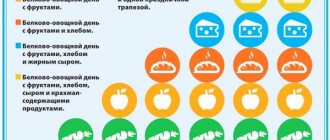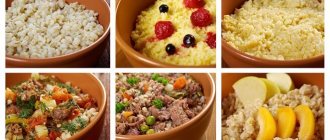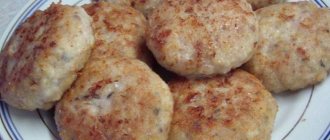Rob Rhinehart, founder of the meal replacement company Soylent, lasted 30 days with his brainchild. He ate only shakes for a month and says he has never felt better. The editor of Motherboard decided to repeat Rob's experiment.
According to him, living on Soylent is difficult only for the first two weeks. Then you get used to it and, if you don’t think about food, you don’t feel either hunger or discomfort. However, if you watch the video to the end and see the editor of Motherboard at the moment when he finally got his hands on food, it becomes clear: we are not ready for this.
However, we still decided to research this topic and understand what meal replacements are available at the moment.
Soylent
Soylent
Soylent was the first in this market. This is a powder that needs to be diluted with water and consumed several times a day in the form of a cocktail. The powder consists of soy protein, algae oil, the slow carbohydrate isomaltulose and a mixture of vitamins and minerals.
The cocktail resulting from mixing powder and water is tasteless. However, those who use it say that it is still not entirely pleasant. Some people have to drink the cocktail in one gulp. However, the company is learning from its mistakes and has announced Soylent 2.0, a drink with a pleasant taste. The cost of a monthly set, taking into account the consumption of four packages per day (2,000 kcal), is $120.
The nutritional value:
- Calorie content - 500 kcal.
- Carbohydrates - 57 g.
- Fats - 23 g.
- Proteins - 20 g.
- Fiber - 3 g.
“Not so much an astronaut, but an idiot”
In 2015, many journalists conducted an experiment by eating only meal replacements for several days, weeks, and sometimes months. In almost all experiments, it all comes down to a single advantage - practicality. “If this idea suits Elon Musk, who once said, ‘If there’s a way to give up food to work more, I’ll do it,’ then it suits me,” wrote Guardian columnist Peter Robinson.
Robinson spent a week eating only Huel cocktails, which are similar in many ways to Soylent. “I ordered a week’s worth of food and posted about it on Facebook. Comments ranged from encouraging "That makes sense" to furious "What the hell, Peter?" My mom told me to just eat a banana,” Robinson recalls.
According to Robinson, Huel's name not only sounds like someone is going to be sick, but the act of consuming it feels "like vomiting, but in reverse." “I understand that some 21-year-old Silicon Valley resident would enjoy pouring liquid breakfast into himself, but I did not enjoy it,” Robinson writes. He admits that he did not feel hungry, but this was not enough to replace his entire diet with cocktails.
Robinson was able to hold out for a week, but on the first day after the end of the experiment he ate a banana: “I don’t feel like an astronaut. I don't feel like the genius behind Tesla. I feel like an idiot."
Ambronite
Ambronite
The Finnish analogue of Soylent took into account the mistakes of its competitor and released Ambronite. This is a vanilla flavored powder that also needs to be diluted with water. One serving has the calorie content of an average meal - 500 kcal.
Ambronite contains several times more ingredients, and the creators focus on their naturalness. Organic apples, organic oatmeal, organic coconut—14 of the powder's 18 ingredients contain the word "organic." A 10-pack set costs $84.15.
The nutritional value:
- Calorie content - 500 kcal.
- Carbohydrates - 54 g.
- Fats - 18 g.
- Proteins - 30 g.
Cocktail Slim Aktiv
The choice of manufacturers is wide, but I suggest that you familiarize yourself with a complete meal replacement: Slim Activ cocktail produced by the German company LR HEALTH&BEAUTY. The cocktail recipe was developed in accordance with the dietary norm for a healthy body adopted in Germany, which strictly determines the amount of nutrients for each product. The LR company produces both sweet flavors of cocktails and non-sweet flavors in the form of soups. A selection of protein shakes to suit every taste.
Keto Chow
Keto Chow
Keto Chow is a meal replacement product for those following a high-fat, low-carb ketogenic diet. Reddit users write that the product is far from ideal - it is quite difficult to live on it for at least three weeks. The cost of a month's supply is higher than competitors: $247.
The nutritional value:
- Calorie content - 672 kcal.
- Carbohydrates - 12 g.
- Fats - 60 g.
- Proteins - 30 g.
How to use?
Substitutes will be good as an additional source of essential nutrients, making the diet more perfect.
It will be harmless and effective to use them instead of one or two meals, as well as as a snack. For those who want to lose weight, it is recommended to replace the most high-calorie dish in their diet with a shake or bar. For example, instead of a cutlet with potatoes, drink a protein mixture and eat a light vegetable salad. Use protein bars as a snack.
In an effort to quickly lose weight, someone may want to replace their entire diet with cocktails. This is absolutely forbidden to do!
There are low-calorie meal replacements for weight loss in the form of sauces, syrups, and jams. They can add variety to your diet without loading your body with extra calories, simple sugars and fats. They can be used as regular products in cooking.
Joylent
Joylent
The creators of Joylent offer a large selection of flavors: mango, banana, chocolate, strawberry, vanilla. Otherwise the product is not much different from Soylent or Ambronite. The cost of a month's supply is 150 euros.
Nutritional information (3 servings):
- Calorie content - 2,119 kcal.
- Carbohydrates - 267 g.
- Fats - 53 g.
- Proteins - 134 g.
Soups Slim Active:
Potato soup “Homemade”, tomato soup “Mediterranean”, vegetable soup with curry “Indian”.
Slim Active soups are a balanced main meal, as well as a healthy and nutritious snack.
Recommendations for use:
- mix 4 tbsp. (57 g) powder and 300 ml warm/hot water;
- leave for a few minutes;
- you can add your favorite ingredients to your “soup of the day”: stewed vegetables and fresh herbs, lean meat or fish.
Serve both hot and cold at any time of the year.
You can effectively use these cocktails instead of a regular breakfast or dinner. Satiety is ensured for a long time. (on average 4 hours).
You can find out more about these healthy protein shakes in your feedback or ask your question in the comments.
Join me on social media. networks Facebook, Odnoklassniki and VKontakte group: //vk.com/club169569142
Mana
Mana
As with other substitutes, it takes about one minute to prepare a few servings of Mana, as the makers have mentioned on the page. The powder contains soy protein, oatmeal, corn, sunflower oil, algae oil, soy lecithin and several other components. The cost of a monthly set is 202 euros.
Nutritional information (3 servings):
- Calorie content - 2,010 kcal.
- Carbohydrates - 243 g.
- Fats - 57 g.
- Proteins - 114 g.
Efficacy and safety of protein meal replacements in obese patients
The global increase in the prevalence of obesity is based on an energy imbalance between dietary energy intake (increased consumption of energy-dense foods high in fat and sugar) and energy expenditure (decreased physical activity) [1, 5–7]. Like any chronic disease, obesity requires complex treatment with a moderate, gradual reduction in body weight, taking into account body mass index (BMI) indicators and associated risk factors [2, 4, 8]. In the complex of therapeutic and preventive measures for obesity, the central place is occupied by diet therapy, the basis of which is maintaining a negative energy balance for a long time by limiting the caloric content of the diet (up to 1200–1500 kcal/day). The calorie content of the diet is calculated individually, taking into account body weight, age, gender, level of physical activity and a number of other factors. As you know, developing a low-calorie diet and ensuring adequate levels of macro- and micronutrients in it seems to be quite a difficult task. Currently used calorie-reduced diets are unbalanced in the content of essential amino acids, dietary fiber, vitamins, macro- and microelements. Specialized nutritional mixtures, which include protein meal replacements (Formula 1 protein shake and Formula 3 protein mixture of the Herbalife weight loss program), are promising in terms of long-term correction of overweight and obesity. These mixtures have a balanced composition of all necessary nutrients and do not require large expenses for food preparation. The use of protein meal replacements allows you to ensure the optimal level of protein and essential amino acids in the diet. A variety of cocktail flavors using different drinks helps solve the problem of food boring. The effectiveness of low-calorie diets with the inclusion of protein meal replacement programs in body weight correction programs has been demonstrated in clinical studies conducted in many countries [9–11, 13, 15]. According to a number of authors, the use of protein meal replacements as a partial meal replacement is a more effective way to reduce and control body weight than simple calorie restriction [10, 13]. A high level of protein intake during weight adjustment is associated with a significantly lower risk of developing diseases associated with overweight and obesity compared to standard protein intake [10]. The results of the studies allow us to recommend the use of protein meal replacements in long-term programs for weight reduction in order to increase the effectiveness of low-calorie diets in patients with overweight and obesity [10, 15]. Purpose of the study: to evaluate the tolerability and clinical effectiveness of low-calorie diets modified by the protein component with the inclusion of protein meal replacements in obese and overweight patients. Research design and methods A single-center, randomized, controlled 6-month study included 90 patients with overweight and stage I obesity aged 21–60 years (mean age: 38.5±3.8 years). BMI averaged 31.6±2.6 kg/m2. The study did not include patients with type 2 diabetes mellitus. The study was carried out in 2 stages lasting 3 months. each on three groups of patients. In order to modify the protein composition of a standard hypocaloric diet, protein meal replacements were used: Formula 1 protein shake and Formula 3 protein mixture produced by Herbalife (USA). In the meal replacement group (FRP) (n=30) at stage I, patients received 2 protein meal replacements as part of a hypocaloric diet (15–25% proteins, 30% fats, 45–55% carbohydrates of its energy value): 2 main dishes were replaced by 2 meals of a Formula 1 protein shake (26 g of dry matter mixed with 250 ml of skim milk, per 1 meal), and 2 snacks were supplemented with a Formula 3 protein mixture (6 g per 1 meal). During the II stage of the study, 1 meal was replaced with a protein shake Formula 1 and 6 g of the Formula 3 protein mixture was added to 1 meal. In the high protein diet (HPD) group (n=30) at stage I, patients received (as part of a hypocaloric diet) ( 25–35% protein, 25–30% fat, 40% carbohydrates of its energy value) 2 protein meal replacements: 2 main meals replaced by 2 servings of Formula 1 protein shake (26 g dry matter mixed with 250 ml skim milk, per 1 meal) with the addition of Formula 3 protein mixture (6 g per 1 meal), and Formula 3 protein mixture (6 g per 1 meal) was added to 2 snacks. During the II stage of the study, 1 meal was replaced with a protein shake Formula 1 and 6 g of the Formula 3 protein mixture was added to 2 meals. At the I stage of the study, patients of the 2 study groups (HZP and VBD) received a standard hypocaloric diet, while caloric restriction to 1500 kcal/day was carried out by reducing fats and carbohydrates. At stage II of the study, the energy value of both diets used was 500 kcal below the individual energy requirement. Patients in the control group (n=30) received a standard hypocaloric diet (1530 kcal/day). The diet contained 70 g protein, 50 g fat and 200 g carbohydrates. The amount of table salt is 4–6 g. Dishes were served boiled, stewed, baked, or steamed. The diet is fractional – 5–6 rubles/day. During the observation process, tolerance to hypocaloric diets was assessed using visual analog scales of hunger and satiety. All patients underwent an anthropometric study with calculation of BMI and determination of waist circumference (WC). Body composition indicators (fat, lean and active cell mass, total body fluid) were assessed by bioimpedancemetry using an Inbody 520 analyzer from Biospase (Korea). The study of biochemical markers was carried out using a biochemical analyzer KoneLab 30i from TermoElectron (Finland). Indicators of carbohydrate metabolism (glucose and insulin in blood plasma), indicators of lipid metabolism (total cholesterol, low-density lipoprotein (LDL) and high-density lipoprotein (HDL) cholesterol, triglycerides) in blood serum were assessed. The dynamics of body weight were assessed at 0, 4, 8, 12, 16, 20 and 24 weeks, body composition indicators - at 0, 12 and 24 weeks, biochemical blood parameters - at 0, 12 and 24 weeks, visual analogue indicators hunger and satiety scales - at 0, 4, 8, 12, 16, 20 and 24 weeks. For statistical computer processing of data, the SPSS 13.0 for Windows software package was used. A multivariate analysis of the data obtained during the work was carried out. A t-test was performed to compare means. Differences between groups of indicators were assessed using ANOVA/MANOVA techniques, including the χ2 test. The obtained differences were considered significant at p values ≤0.05. Results of the study and their discussion Evaluation of the effectiveness of using protein meal replacements for 6 months. demonstrates a significant decrease in BMI and WC in patients in the study groups (Fig. 1, 2). Analysis of the dynamics of BMI and WC at a period of 4 weeks. observation indicates a more pronounced decrease in BMI and WC in the IAP group compared to both the comparison group and the HZ group, demonstrating the positive effect of the introduction of additional portions of protein on the dynamics of BMI and WC in long-term follow-up. It should be noted that by the end of the observation period, patients in the control group showed a slight increase in BMI, apparently reflecting a decrease in adherence to the prescribed dietary regimen characteristic of obese patients. In a comparative assessment of body composition indicators, it was noted that only in the IAP group there was no decrease in the content of lean body mass during the observation period, while in this group the most pronounced decrease in the content of fat body mass was found (on average by 10.8 kg). Weight reduction in the HZP group and the control group was accompanied by an undesirable decrease in lean body mass (on average by 1.3 and 1.1 kg, respectively) against the background of a reduction in fat mass, which was more pronounced in the HZP group than in the control group (on average by 5 .92 and 5.1 kg, respectively). In patients receiving protein meal replacements, there was also a clear tendency towards normalization of lipid and carbohydrate metabolism parameters (Fig. 3–5). Noteworthy is the fact that in the IBD group there was a more pronounced decrease in LDL levels and an increase in HDL levels in the blood serum than in the control group. Modification of low-calorie diets through protein food substitutes was accompanied by positive dynamics in feelings of hunger and satiety (Fig. 6, 7). In the IAP and HZ groups, a less pronounced feeling of hunger was noted throughout the entire study period and a more pronounced feeling of satiety than in the control group. Patients in the control group showed a significant increase in the feeling of hunger, which the patients attributed to the boring nature of the standard hypocaloric diet. Conclusion The results of the studies indicate that the inclusion of high-protein meal replacements in a hypocaloric diet promotes effective reduction of body weight (mainly due to the fat component while maintaining lean body mass), improvement of lipid and carbohydrate metabolism against the background of optimal dynamics of hunger and satiety indices in patients with overweight and obesity. The results obtained allow us to recommend the use of protein meal replacements in long-term programs for weight correction in order to increase the effectiveness of hypocaloric diets and improve the quality of life of obese patients.
Literature 1. Ametov A.S. Selected lectures on endocrinology. M.: Medical Information Agency LLC, 2011. 544 p. 2. Bessesen D.G., Kushner R. Overweight and obesity. Prevention, diagnosis and treatment. M.: ZAO Publishing House BINOM, 2004. 240 p. 3. Butrova S.A. From the obesity epidemic to the diabetes epidemic // Consilium medicum. 2003. T. 5. No. 9. P. 524–528. 4. Butrova S.A., Dzgoeva F.Kh. Modern therapy of obesity // Breast Cancer. 2005. T.13. No. 2. pp. 96–99. 5. Dedov I.I., Melnichenko G.A., Romantsova T.I. Pathogenetic aspects of obesity // Obesity and metabolism. 2004. No. 1. P. 3–10. 6. Nutrition and physical activity for health: Proceedings of the WHO European Ministerial Conference on Combating Obesity. Istanbul, Türkiye, 2006. 7. Obesity and overweight. WHO. Newsletter No. 311, March 2011. 8. Rational pharmacotherapy of diseases of the endocrine system and metabolic disorders: A guide for practitioners / Ed. I.I. Dedova, G.A. Melnichenko. M.: Litterra, 2006. 1080 p. 9. Ditschuneit HH, Flechtner-Mors M., Johnson TD, Adler G. Metabolic and weight-loss effects of a long-term dietary intervention in obese patients // Am. J. Clin. Nutr. 1999. Vol. 60. P. 198–204. 10. Flechtner-Mors M., Boehm BO, Wittmann R., Thoma U., Ditschuneit HH Enhanced weight loss with protein-enriched meal replacements in subjects with the metabolic syndrome // Diabetes Metab.Res.Rev. 2010. Vol. 26. P. 393–405. 11. Flechtner-Mors M., Ditschuneit HH, Johnson TD, Suchard MA, Adler G. Metabolic and weight loss effects of long-term dietary intervention in obese patients: four-year results. Obes. Res. 2000. Vol. 8. P. 399–402. 12. Food and health in Europe: a new basis for action // WHO Regional Publications. European series, 96. 2004. 13. Lee K., Lee J., Bae WK, Choi JK, Kim HJ, Cho B. Efficacy of low-calorie, partial meal replacement diet plans on weight and abdominal fat in obese subjects with metabolic syndrome: a double-blind, randomized controlled trial of two diet plans – one high in protein and one nutritionally balanced // Int. J. Clin. Pract. 2009. Vol. 63. P. 195–201. 14. Ogden CL, Carroll MD, Curtin LR et al. Prevalence of Overweight and Obesity in the United States, 1999–2004 // JAMA. 2006. Vol. 295. P. 1549–1555. 15. Treyzon L., Chen S., Hong K. et al. A controlled trial of protein enrichment of meal replacements for weight reduction with retention of lean body mass // Nutrition Journal. 2008. Vol. 7. P. 23.











